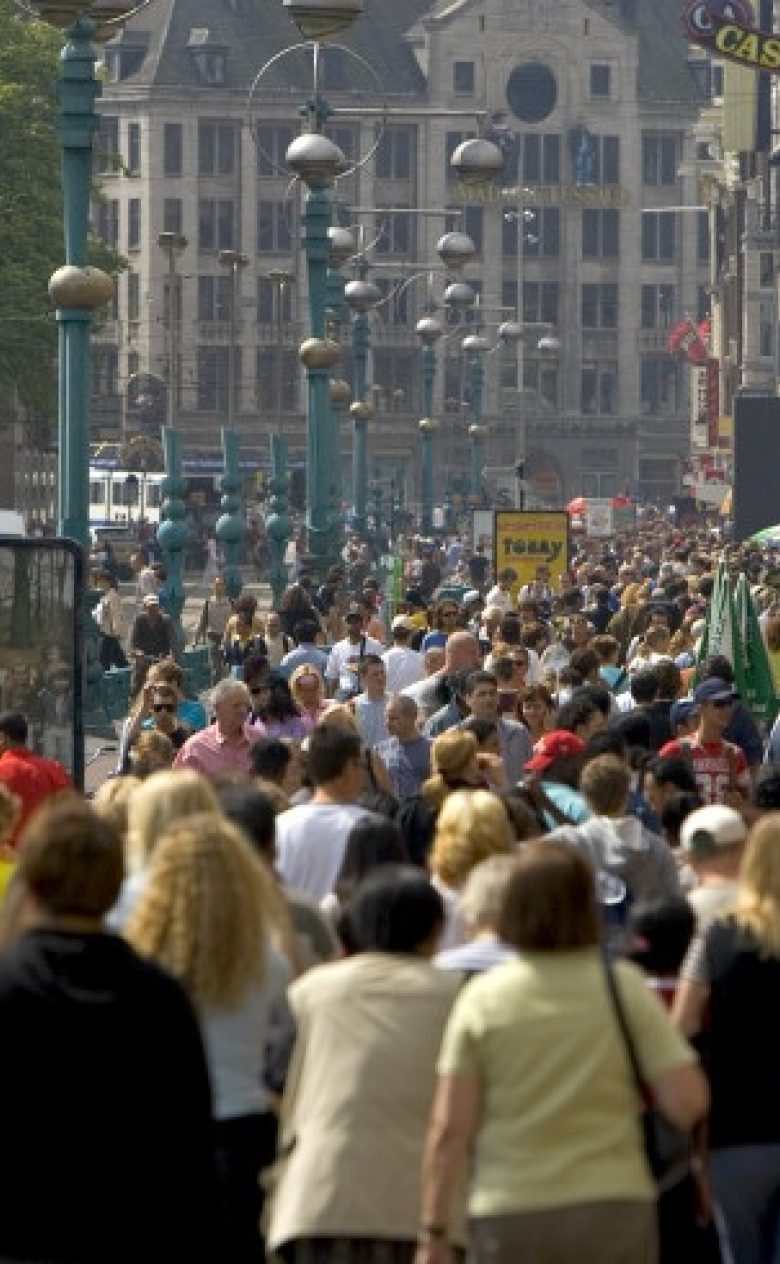Resilient cities
Cities are home to over half the world’s population, and this trend is only growing; estimates predict that demographic changes and migration will cause this figure to rise to nearly 70% by 2050. Yet cities and their populations are impacted by urbanisation and climate change. Deltares creates tailored, smart, and integral solutions aimed at increasing urban resilience and building capacity. We collaborate with global and local partners, employing a multi-disciplinary approach. This is how we ensure cities are equipped to deal with future challenges.

Deltares’ urban resilience solutions are designed so that they are practical and future-proof. To maximise their impact and efficiency, we adopt a collaborative and multi-disciplinary approach. Each city has its own unique history, culture, and challenges. That’s why we design our solutions in cooperation with a wide range of (local) stakeholders, including governments, local communities, research institutes, and the private sector.
This grants us a unique insight into a city’s potential. By working with different stakeholders, we also gain a better understanding of the broader challenges, allowing us to further tailor our solutions and create additional value by tackling these issues where possible. Our approach stimulates the development of resilient urban communities worldwide.
Urban resilience allows cities to adapt and transform in the face of the challenges they face, helping them to prepare for both the expected and the unexpected. Around the world, Deltares supports cities facing growing challenges, helping them become more resilient.
Integrated Urban Water Management
Urban water systems are vital components of a city’s infrastructure. Cities’ economies, health, food, and ecosystems rely on clean and accessible water. Infrastructure needs to be fit-for-purpose, so that it can face tomorrow’s challenges whilst at the same time serving populations today. That’s why at Deltares we believe in the importance of integrating water management strategies with the wider urban planning processes. This approach helps cities manage water resources efficiently, mitigate flood risks, and create climate-resilient urban landscapes.
Our approach is aimed not only at reducing existing water problems, but also at creating added value for cities. This could for example be by reducing the inequality of opportunity, strengthening biodiversity, or improving the living environment through the application of nature-based solutions.
Nature based solutions
Nature-based solutions (NBS), such as green infrastructure, are key to ensuring urban resilience. These solutions can help reduce flood risks, improve water quality, enhance biodiversity, and create more sustainable urban ecosystems. They can also be multi-purpose, serving as recreational areas for local communities and thereby enriching local neighbourhoods.
Deltares conducts extensive research, aimed at advancing and promoting NBS across all spatial scales. This ranges from field testing of permeable pavement and bioswales, to experimenting with mangroves and willow trees in wave flumes for coastal protection, to exploring storage and retention options in river systems.
As co-coordinators of the Netherlands Climate-proof Cities research program (NKWK-KBS), we are actively involved in the development tools and knowledge databases that promote the implementation of green-blue infrastructure (GBI). GBI is vital to mitigate urban flooding, water scarcity, and heat stress. GBIs are excellent examples of urban nature-based solutions; they use ecosystem services to not only reduce climate change impacts, but also to improve the liveability of urban space, and support biodiversity, and public health.
Abroad, we have worked with local partners and urban design experts to develop conceptual designs for streetscapes and neighbourhoods in cities such as New Orleans, Vancouver, Mexico City, Guayaquil, and Yangon.
Social inclusion
For solutions to be successful, they also need to consider the wider impact on local communities. Equity is paramount for urban resilience. Cities should move away from traditional climate change adaptation and mitigation approaches and prioritise broader concerns, including social inclusion. Cities are diverse in culture and populations, and each different community has its own needs which must be met. Poor and vulnerable populations in cities are those most impacted by climate change, as they are more exposed to risks such as flooding, drought, water affordability, and access to clear and reliable drinking water.
This is why Deltares’ urban resilience solutions are designed holistically and in consultation with local communities. In addition, socio-economic data and demographic information form part of our flood and drought risk assessment studies. This means that our proposed risk reduction solutions explicitly account for differences in social vulnerability of communities and neighbourhoods.
Evidence-based decisions, model simulation and urban design tools
Deltares has designed a range of modelling and decision support tools to help policy and decision makers. These tools allow users to better understand urban systems, assess potential risks, and identify optimal resilience measures. As a result, policy and decision makers are empowered to take evidence-based decisions, using data-driven insights.
Our solutions are designed in line with global standards, including the UN’s Climate Risk Informed Decision Analysis (CRIDA). By incorporating Dynamic Adaptive Policy Pathways (DAPP), we also support decision-makers by providing insight into both short-term and long-term planning.
To simulate flooding, water scarcity or drought under changing climate and demographic conditions, we can deploy a range of software packages, simulating hydrological processes in a city's river basin (wflow), modelling the hazards from marine, riverine or rainfall flooding (Delft3D FM), and its impact (flood risks) on a city and its citizens (FIAT), or the intricate balance between a city's water resources supply and its water demand (RIBASIM). Tools that have been specifically developed for improving resilience in urban settings include:
- FloodAdapt tool, a decision support tool for understanding flood risk and identifying climate adaptation actions to mitigate marine, rainfall and riverine flooding, with or without the added effects of future sea level rise, changes in rainfall patterns and storminess and socio-economic developments.
- Urban Green Blue Grids, a website displaying scientific and practical knowledge on climate adaptation, heat stress, urban biodiversity, urban agriculture, air quality improvement and decentralised sustainable energy production, to make it accessible and applicable for climate professionals in urban development.
- Climate Resilient City Tool (CRCTool), an interactive online tool supporting the collaborative planning of climate adaptation measures used by both experts and non-experts in the field of urban planning and adaptation.
Deltares believes in openness and transparency, and that sharing knowledge and innovative insights worldwide enables delta life. Our dare to share principle applies to all our clients and includes the software and tools we develop.
Partners
In addition to working with local partners when designing tailored solutions for each city, Deltares works with the Dutch government and with global partners to improve urban resilience around the world.
As members of the Dutch government’s Climate-proof Cities research program (In Dutch: NKWK-KBS), we work with more than twenty partners in the Netherlands on knowledge sharing and dissemination, aimed at creating climate-resilient and water-robust cities in the Netherlands. We also work with the Dutch government’s Water as Leverage programme, providing programme development expertise and specialist knowledge.
We partner with the World Bank in a Framework Agreement on Urban Flood Risk Assessment, in which we conduct flood risk and resilience studies in cities in the Global South, including in Bolivia, Mozambique, Rwanda, Madagascar, and India.
As a trusted partner of the Resilient Cities Network, we work together with many cities to enhance urban capacity, promote data accessibility, and empower city leaders to take decisive action. Together with the Resilient Cities Network, and with the support of the Dutch government, we recently launched the Water Action Towards Urban Resilience (WATUR) Initiative during the UN 2023 Water Conference, aimed at helping cities to become more resilient and deal with water and climate-related risks.

